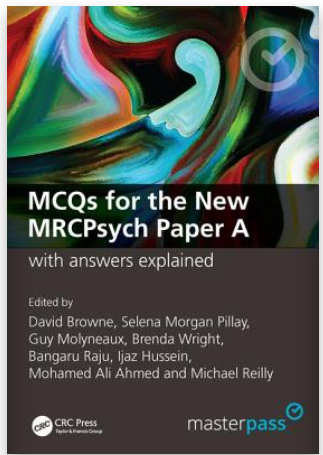McQs for the New Mrcpsych Paper A with Answers Explained
Comprising of 400 MCQs, this book provides essential revision content to help you pass the recently introduced MRCPsych Paper The book follows the most recent guidelines for the new curriculum in compiling the content. MCQs for the New MRCPsych Paper A with Answers Explained is an invaluable aid for all candidates for the examination of the Royal College of Psychiatrists. Other clinicians and undergraduate students in medicine and health sciences will also find it useful.
About the Authors
Edited byDavid Browne, MB, BCH, BAO, DCP, MScLMD, Mogadiscio, ACC, MRCPsych, consultant psychiatrist, Ashlin Centre, Beaumont Hospital, Dublin, Ireland
Selena Morgan Pillay, MB, BAO, BCH, DCP, MRCPsych, MMEDSc, senior clinical lecturer RCSI & consultant psychiatrist, Beaumont Hospital, Beaumont Rd., Dublin, Ireland
Guy J. Molyneux, MB, BCH, BAO, MRCPsych, Postgraduate Diploma in CBT, Diploma in Management, clinical director in psychiatry at HSE Dublin North City and County Mental Health Services and MMUH, and consultant in adult psychiatry at St. Vincent's Hospital, Fairview, Ireland
Brenda Wright, MB BCh BAO MRCPsych, MFFLM, consultant forensic psychiatrist, National Forensic Mental Health Service,
Dundrum, Dublin, IrelandRaju Bangaru, MD, MBA, BS, MRCPsych, DPM, executive clinical director, North Dublin Mental Health Services, Consultant Psychiatrist, Connolly Hospital, IrelandIjaz Hussain, MMedSc, MBBS, MRCPsych, DCP, consultant physician, Fraser Health, Surrey Mental Health, British Columbia, CanadaMohamed Ali Siddig Ahmed, MMedSc, MBBS, MRCPsych, DCP, MD, senior consultant psychiatrist & clinical director, Hamad Medical Corporation, Doha, QatarMichael Reilly, MB, BCh, BAO, MRCPsych, Diploma in Management, consultant psychiatrist Sligo Mental Health Services, Ballytivnan, Ireland

Comments
Post a Comment
Your Thoughts?